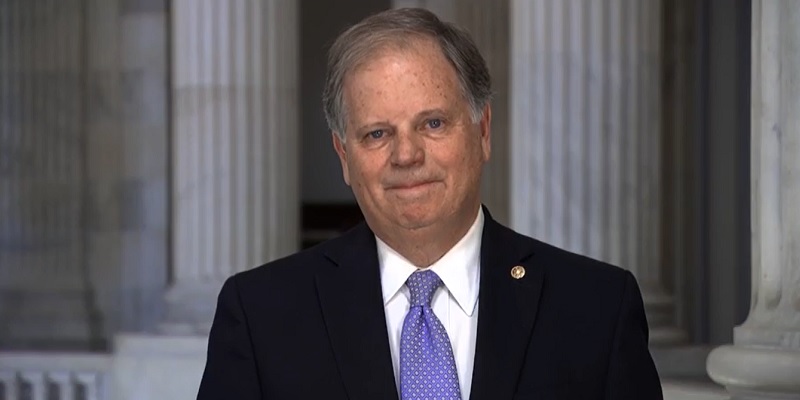Only four full days away from the November 3 general election, U.S. Senator Doug Jones (D-AL) continues to claim to be a moderate on the campaign trail. However, the data paints a much different picture.
The highly respected, non-partisan data and analytics site FiveThirtyEight.com hosts a comprehensive database tracking each member of Congress’ voting history. This includes a tally of how often representatives and senators vote with or against President Donald Trump’s position; this data is formulated into a percentage, comprising each legislator’s “Trump Score.”
The dataset also takes Trump’s margin of victory over Hillary Clinton in 2016 (in each state for senators and each district for representatives) and calculates a predicted Trump Score that hypothesizes how often a member is expected to vote with Trump based on that margin.
FiveThirtyEight then compares each legislator’s actual Trump Score to the predicted score to effectively see the approximate difference between the sentiment of a legislator’s constituents and that individual’s congressional votes.
Examining Jones, the data showed Alabama’s junior senator has a Trump Score of only 34.8% since he took office in January 2018. The data is up-to-date, with Jones’ latest vote against Justice Amy Coney Barrett factored in.
In contrast, U.S. Senator Joe Manchin (D-WV) has a score of 51.6% and U.S. Senator Kyrsten Sinema (D-AZ) came in at 51.5%; both are perceived-moderate Democrats.
Other Democrats who have been recently ousted from office by voters in red states also scored significantly higher than Jones, including U.S. Senators Heidi Heitkamp of North Dakota (54.8%), Joe Donnelly of Indiana (54.2%), Claire McCaskill of Missouri (45.8%) and Bill Nelson of Florida (43.4%). Even current blue- and purple-state Democratic Caucus members had higher Trump Scores than Jones, including U.S. Senators Angus King of Maine (37.9%), Mark Werner of Virginia (35.5%) and Jacky Rosen of Nevada (35.1%).
In fact, Jones’ Trump Score is closer to the far-left wing in his party than the more-moderate senators. The Democrat from Alabama scored closer to the likes of U.S. Senators Chuck Schumer (D-NY), Mazie Hirono (D-HI), Richard Blumenthal (D-CT), Sheldon Whitehouse (D-RI), Brian Schatz (D-HI), Dick Durbin (D-IL) and Dianne Feinstein (D-CA) than to Sinema and Manchin; Jones scored closer to House Speaker Nancy Pelosi (D-CA) and U.S. Senators Kamala Harris (D-CA), Ed Markey (D-MA) and Ron Wyden (D-OR) than to Heitkamp.
Overall, Jones also scored closer to the extreme left of his party than he did to the left-most Republican, U.S. Senator Susan Collins (R-ME).
Based on Trump’s 2016 margin, Jones’ predicted Trump Score was 85.5%. This means his actual Trump Score was 50.7 percentage points lower than expected. That massive margin was second-largest nationally, with only U.S. Senator Jon Tester (D-MT) having a higher negative differential.
The more recent data paints an even worse picture for Jones. Looking at only the 116th Congress, which began in January 2019 and is still in session, Jones’ Trump Score dropped to 23.1%. Simply put, the more time he spent in D.C., the further to the left Jones went.
The Yellowhammer State’s senior senator is a much different story; U.S. Senator Richard Shelby (R-AL) has an overall Trump Score of 93.5%.
Jones will face Republican U.S. Senatorial nominee Tommy Tuberville at the ballot box on Tuesday.
Sean Ross is the editor of Yellowhammer News. You can follow him on Twitter @sean_yhn













